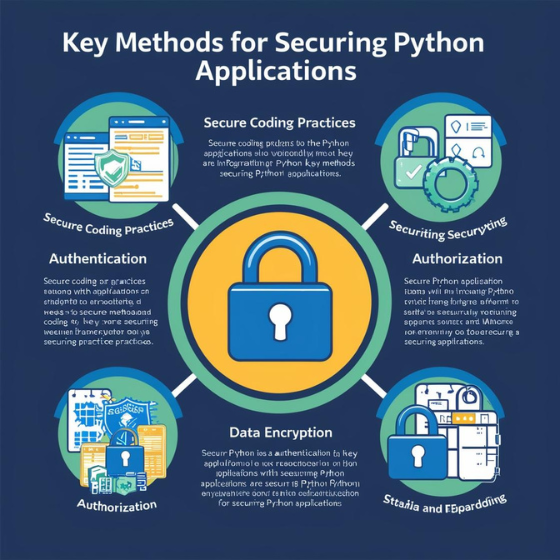The Role of Django in Python Development: Transforming
Ideas into Reality
When it comes to Python development, Django stands out as one of the most popular frameworks, powering millions of websites and applications. In fact, leading companies like Instagram, Spotify, and Pinterest rely on Django to deliver robust and scalable solutions. What makes this framework so indispensable for developers?
This blog explores the role of Django in Python development, highlighting its significance, features, and why it’s the go-to framework for many developers. If you’re looking to build secure, scalable, and efficient applications, understanding Django’s role is essential.
Why Django? A Framework Built for Efficiency
Django is a high-level Python web framework designed to encourage rapid development and clean, pragmatic design. Released in 2005, Django is known for:
- Simplicity: It handles much of the web development boilerplate, letting developers focus on the core logic.
- Scalability: Ideal for small startups and enterprise-level projects alike.
- Security: Built with security in mind, it protects against common vulnerabilities like SQL injection and cross-site scripting (XSS).
Whether you’re building an e-commerce platform, a social media app, or a content management system (CMS), Django is a versatile choice.
1. Simplifying Development with Django
One of the key aspects of the role of Django in Python development is how it simplifies and accelerates the development process.
Features That Make Django Developer-Friendly:
- Built-in Admin Panel: Django comes with an out-of-the-box admin interface, enabling developers to manage databases without custom coding.
- DRY Principle: Django emphasizes “Don’t Repeat Yourself,” promoting efficient and reusable code.
- Batteries Included: It offers built-in functionalities like authentication, URL routing, and form validation.
Example Use Case: Rapid Prototyping
Startups often need to bring their ideas to market quickly. Django’s pre-built components help developers prototype applications in record time, saving both time and money.
At Sodio, our development services leverage Django’s features to create fast, efficient solutions tailored to your needs.
2. Django’s Role in Ensuring Security
Security is a top priority in web development. Django was designed with several built-in features to protect applications against the most common threats.
Security Features in Django:
- SQL Injection Protection: Its ORM (Object-Relational Mapper) ensures database queries are parameterized.
- XSS Protection: Automatic escaping of data to prevent malicious code execution.
- CSRF Protection: Built-in middleware to guard against cross-site request forgery attacks.
Real-World Impact:
Consider an e-commerce platform. Without security measures, sensitive customer data like payment information could be compromised. By using Django, developers can safeguard such applications effectively.
3. Scalability: Django’s Edge in High-Traffic Applications
Another critical aspect of the role of Django in Python development is its scalability. As businesses grow, their applications must handle increased traffic and data loads without compromising performance.
How Django Supports Scalability:
- Caching Framework: Django supports multiple caching backends like Memcached and Redis, speeding up page loads.
- Database Optimization: Efficient ORM allows seamless integration with databases, ensuring faster query execution.
- Decoupled Components: Its modular structure ensures scalability without overhauling the entire system.
Success Story: Scaling with Django
Instagram, with billions of users, relies on Django’s scalability to handle massive amounts of data and traffic efficiently.
4. Flexibility Across Industries
Django’s versatility makes it a top choice for diverse industries, including:
- Healthcare: HIPAA-compliant applications for patient management.
- E-commerce: Scalable platforms with secure payment gateways.
- Education: LMS (Learning Management Systems) and virtual classrooms.
Case Study: Building an EdTech Platform
A client approached Sodio to build an online learning platform capable of supporting thousands of concurrent users. Using Django, we delivered a feature-rich application with seamless user management and real-time updates.
Want to know more? Check out our case studies for insights into our Python projects.
5. Community Support: A Pillar of Django’s Success
Django’s active community is another reason for its widespread adoption. Developers can rely on comprehensive documentation, forums, and tutorials to overcome challenges.
Benefits of Django’s Community:
- Frequent Updates: Regular releases ensure the framework stays secure and modern.
- Rich Ecosystem: Thousands of third-party packages to extend functionality.
- Collaboration Opportunities: Engage with experts for complex problem-solving.
For businesses, this means faster development cycles and a reliable foundation for long-term growth.
Best Practices for Django Development
While Django offers many advantages, adhering to best practices ensures optimal performance and security.
Key Best Practices:
- Use Virtual Environments: Isolate your Django project dependencies using tools like
venvorvirtualenv. - Follow REST Principles: When building APIs, use Django REST Framework to ensure scalable and maintainable endpoints.
- Automate Testing: Use Django’s testing tools to ensure bug-free deployments.
Pro Tip: Continuous Improvement
At Sodio, we follow Agile methodologies and DevOps principles to deliver high-quality Django applications. Partner with us to leverage these practices in your projects.
Conclusion
Django has revolutionized Python development by offering a framework that’s both powerful and user-friendly. From rapid prototyping to enterprise-grade scalability, the role of Django in Python development is unparalleled.
At Sodio, we specialize in Django-powered solutions tailored to your business goals. Whether you’re launching a startup or scaling an existing platform, our development services can turn your vision into reality.
Contact us today to discuss your project and take the first step toward building a secure, scalable, and innovative application.







